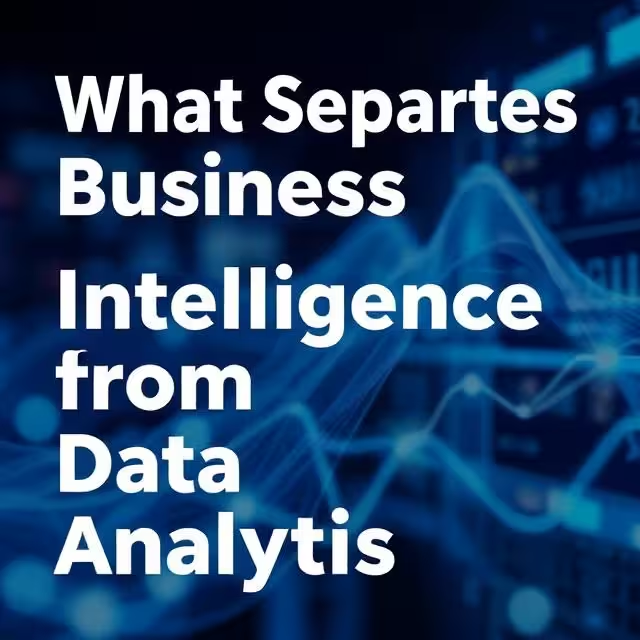Business Intelligence vs Data Analytics - While Data Analytics and Business Intelligence (BI) are closely related, they serve distinct purposes. Simply put, BI focuses on understanding what happened, while data analytics dives into why it happened and what could happen next.
Difference between Data Analytics and Business Intelligence - Business Intelligence is about tracking historical data. It provides dashboards and reports that help businesses monitor performance, identify trends, and make informed decisions. For instance, BI might show that a company's sales dropped by 10% last month compared to the previous month.
Data Analytics goes further by exploring the underlying reasons for those trends. Using advanced techniques like predictive analytics or data mining, it might analyze customer behavior, market conditions, or seasonal factors to explain why sales dropped and predict future trends.
Here's a common example: a retail company sees a decline in sales (BI). Data analytics helps them discover that customer preferences have shifted, and certain products no longer appeal (analytics). With this insight, they can make changes to product offerings or marketing strategies.
In short, BI gives businesses a snapshot of where they are, while data analytics helps them understand why they're there and what to do next, making them complementary tools for smarter decision-making.
Frequently Asked Questions:
How is business intelligence different from data analytics?
While data analytics goes deeper to identify patterns and forecast future events, business intelligence (BI) concentrates on reporting historical and current data for decision-making.
Does BI or data analytics handle more complex analysis?
Data analytics typically involves more advanced statistical and predictive techniques compared to BI, which is more about dashboards and performance tracking.
Which is more visual: BI or data analytics?
BI leans heavily on data visualization tools like dashboards and charts to simplify insights, whereas data analytics often requires coding or specialized tools for analysis.
Do BI and data analytics have the same objectives?
No, BI aims to provide actionable insights from historical data, while data analytics focuses on discovering trends, correlations, and forecasts.
Is there a difference in tools used?
Yes, BI tools include Power BI and Tableau for visual reporting, while data analytics tools include Python, R, and SQL for deeper analysis.
Who typically uses BI vs. data analytics?
Business users and executives often use BI tools, whereas data scientists and analysts use data analytics tools for more technical tasks.
Do both rely on the same data sources?
Yes, they can pull from the same data sources, but they process and use that data in different ways depending on the goal.
Which is better for real-time monitoring?
BI is better suited for real-time monitoring through dashboards and live reporting features.
Is data analytics part of BI?
In many cases, yes. BI can include some data analytics, but data analytics is a broader discipline that extends beyond BI.
Which one should a business choose?
It depends on the need—BI for reporting and decision-making support, and data analytics for forecasting, modeling, and deeper strategic insights.


